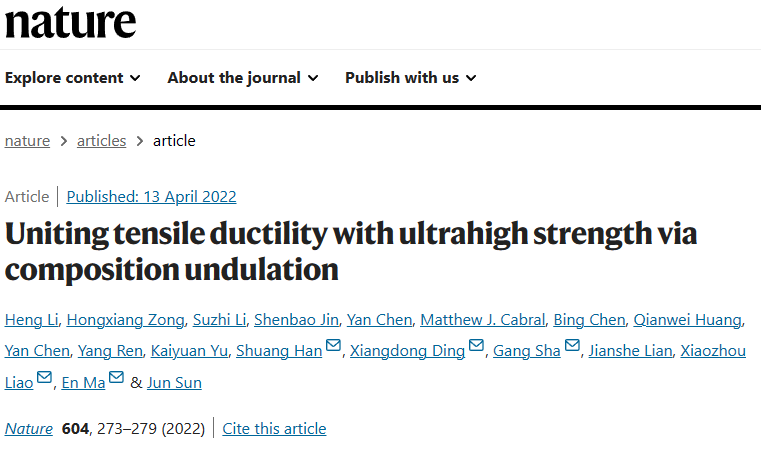
Metals with nanocrystalline grains have ultrahigh strengths approaching two gigapascals. However, such extreme grain-boundary strengthening results in the loss of almost all tensile ductility, even when the metal has a face-centred-cubic structure—the most ductile of all crystal structures1,2,3. Here we demonstrate that nanocrystalline nickel–cobalt solid solutions, although still a face-centred-cubic single phase, show tensile strengths of about 2.3 gigapascals with a respectable ductility of about 16 per cent elongation to failure. This unusual combination of tensile strength and ductility is achieved by compositional undulation in a highly concentrated solid solution. The undulation renders the stacking fault energy and the lattice strains spatially varying over length scales in the range of one to ten nanometres, such that the motion of dislocations is thus significantly affected. The motion of dislocations becomes sluggish, promoting their interaction, interlocking and accumulation, despite the severely limited space inside the nanocrystalline grains. As a result, the flow stress is increased, and the dislocation storage is promoted at the same time, which increases the strain hardening and hence the ductility. Meanwhile, the segment detrapping along the dislocation line entails a small activation volume and hence an increased strain-rate sensitivity, which also stabilizes the tensile flow. As such, an undulating landscape resisting dislocation propagation provides a strengthening mechanism that preserves tensile ductility at high flow stresses.
Link:https://www.nature.com/articles/s41586-022-04459-w